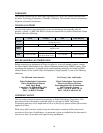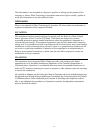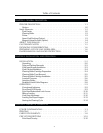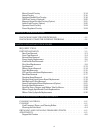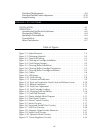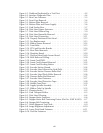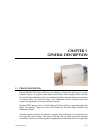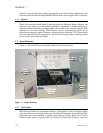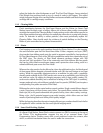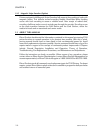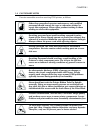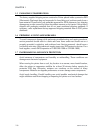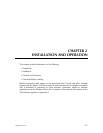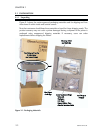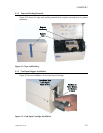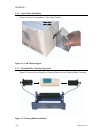
adjust the feeder for other thicknesses as well. The Card Feed Hopper, has an attached
Card Weight that positions itself on top of a stack of cards in the Hopper. This added
weight increases the grip of the card feed rollers and assures reliable card feeds throughout
cartridge-full to cartridge-empty conditions.
1.2.2 Cleaning Roller
Cards transitioning between the Card Input Hopper and the Printer (or Smart Card
Station) travel through a pair of rollers. Above one of these rollers resides a removable
cartridge that contains the Cleaning Roller. A tacky surface on this roller collects any lint or
other loose particles that may adhere to the underlying rollers due to contact with passing
cards. To maintain its ability to collect particles, users must periodically replace the
Cleaning Roller. Users should watch for evidence of particle buildup on the Cleaning
Roller or print anomalies having related characteristics.
1.2.3 Printer
Card imaging occurs as the cards transition through the Printer Station. For color imaging,
the cards transition past the Print Head three times. Yellow, magenta, and cyan (YMC)
dyes transfer from ribbon panels onto the cards in amounts controlled by heat produced
by Print Head elements. Each of the 32K color possibilities results from a particular mix of
the YMC dyes. The density of Print Head elements produces images with 300
dot-per-inch (dpi) resolution. One of the commonly used color ribbons also has panels
that can lay down black monochrome images and a protective clear coating, each in a
related additional pass across the Print Head.
Whereas the color panels of color ribbons lay down dye sublimation dyes, the black panel
of these same ribbons deposits a thermal transfer resin (Kr) that only images at one heat
setting. While this essentially eliminates resin as a medium for gray scale, a capability
already made available by the YMC panels, resin serves as a particularly good choice for
text and bar codes. By ending the imaging sequence with a clear overlay coating (O),
cards receive added durability and a resistance to fading of the CMY dyes. In summary,
images produced using color ribbons typically have five panels (CMYKrO) and require a
corresponding five passes across the Print Head.
Ribbons also exist in single-coated and two-panel varieties. Single-coated ribbons deposit
a resin. Users have a choice of many resin colors. Two-panel ribbon varieties have either
black dye (Ks) or Kr panels alternated with panels that lay down clear overlay coatings.
Being a dye, the Ks material supports gray-scale imaging, which offers users an ideal
means of producing black-and-white photo quality images.
While the forgoing describes the major imaging ribbon types, readers should check the list
of supplies for other varieties that can serve special imaging needs.
1.2.4 Smart Card Docking (Option)
At a Smart Card Station, Smart Card contacts connect to a DB-9 connector at the rear of
the Printer. This implementation supports the use of an external Smart Card
Programming device. Docking occurs with a card positioned under the contacts; after
which, a solenoid mechanism raises the card to make the connections.
980264-001 Rev. B 1-3
CHAPTER 1



